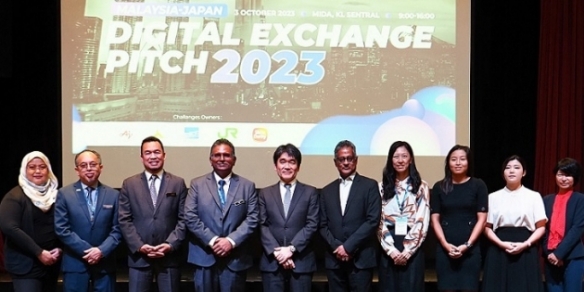SAS Global Forum shines spotlight on analytics in action
By Karamjit Singh June 7, 2019
- Analytics leader invests nearly twice as much in R&D as most tech companies
- Platform automates complex tasks required to build world-class analytical models
.png)
The big A in the US at the end of April may well have been the Avengers: End Game movie but to the estimated five thousand attendees of SAS Institute’s annual Global Forum held in Dallas from April 29 to May 1, the big A could only mean Analytics.
This is the only thing that software vendor SAS Institute does and it has been doing it since 1976 when Jim Goodnight and John Sal founded the company. And it claims to do analytics, specifically business analytics, better than anyone else in the world. It backs this up by spending around 25% of revenue on research and development, yearly. That’s nearly twice the percentage of annual revenue in R&D as most major tech companies.
Its latest revenues disclosed shows that the almost 15,000 strong company had US$3.24 billion in revenue for 2017, which represents its 42nd straight year of revenue growth.
Technology research company, Gartner Inc, recently named SAS a Leader in the Gartner Magic Quadrant for Data Quality Tools, based on completeness of vision and ability to execute. This is the thirteenth consecutive time that SAS has been named a Leader.
Such recognition is common with SAS pointing out in its 2017 annual report that in more than 30 reports, it was ranked as an outright leader or leader equivalent.
Revenue growth and profitability in 2017 was driven by increased customer demand for artificial intelligence, machine learning, fraud and risk management, and cloud solutions with SAS expecting the same drivers to hold true moving forward.
Yet ask Goodnight about revenue projections and the size of the global analytics market and he’d rather talk to you about how SAS is devoting its energy, time and brain power to helping customers make sense of the growing scale of data in businesess and how SAS sees “making sense of all that information is critical to solving some of our [the planet’s] greatest challenges.”
Goodnight believes that SAS can help everyone be more creative and strategic by helping solve the more mundane tasks involved in work. He talks excitedly about wanting to put the latest technology in the hands of those who will help shape the future.
SAS believes that this technology is represented by the latest version of its SAS Platform which automates the complex tasks required to build world-class analytical models. Data cleansing, data transformations, selecting best variables, model building and comparing models, model deployment and retraining tasks are automated while using established best practices.
SAS hails the updated SAS Platform as delivering additional innovation in AI, specifically in the areas of machine learning, computer vision, natural language processing (NLP) and other technologies that underpin AI.
Goodnight talks about how this platform allows everyone to take part in the Analytics revolution. “It is open to every tool in your environment and the platform can support every phase of your journey, from inception of idea to enterprise deployment,” he says, confident that it will help prepare the next generation of data scientists, shaped by machine learning and AI, with analytics at its heart. The platform is also set to benefit from a March announced US$1 billion investment into AI by SAS, with Goodnight especially excited about breakthroughs in computer vision.
Describing the advancements in computer vision as being relatively recent, Goodnight, who according to the SAS Wikipedia page still owns around 75% of SAS, is of the belief that anything humans can see, “we can teach machines to do by showing it stuff over and over and optimizing the model.”
One example of this is in healthcare, and where SAS is already working in partnership with a Dutch medical centre helping the doctors there to understand if the chemotheraphy is working. Its software does this by going through hours of CT scans, the most tedious part of a doctor’s job. This puts more time back in the hands of the doctors who can focus on delivering better health outcomes to patients.
While advances in analytics and computer vision hold promising outcomes for healthcare, Goodnight is hard pressed to identify a particular vertical that has reaped the most benefits from analytics.
“That is hard to say though we have been working with various industries for years and years.” He does however pinpoint retail as a sector that is now showing a real interest in analytics. “They are all up against Amazon and other internet companies and have to be on their game in order to compete with the digital competitors,” he says, highlighting that SAS does quite a bit of demand driven optimization and forecasting for them.
Notwithstanding all the concern about privacy and data security, looking at all the data that is being today by both digital companies and brick and mortar companies through their digital channels, Goodnight predicts that customer intelligence will get better. And of course, SAS will be there to help any customer that cannot get a handle on their data.
Karamjit Singh reports from the SAS Global Forum 2019 in Dallas, the US, at the invitation of SAS. All editorials are independent.
More than 5,500 data scientists, executives and decision makers gathered at the SAS Global Forum 2019 in Dallas. With more than 700 diverse sessions, it is billed as the world’s premier analytics conference for leading organizations and experts exploring big data, the emergence of AI, and the need to analyze data on the edge, in the cloud and at blistering speeds.


